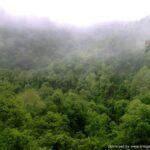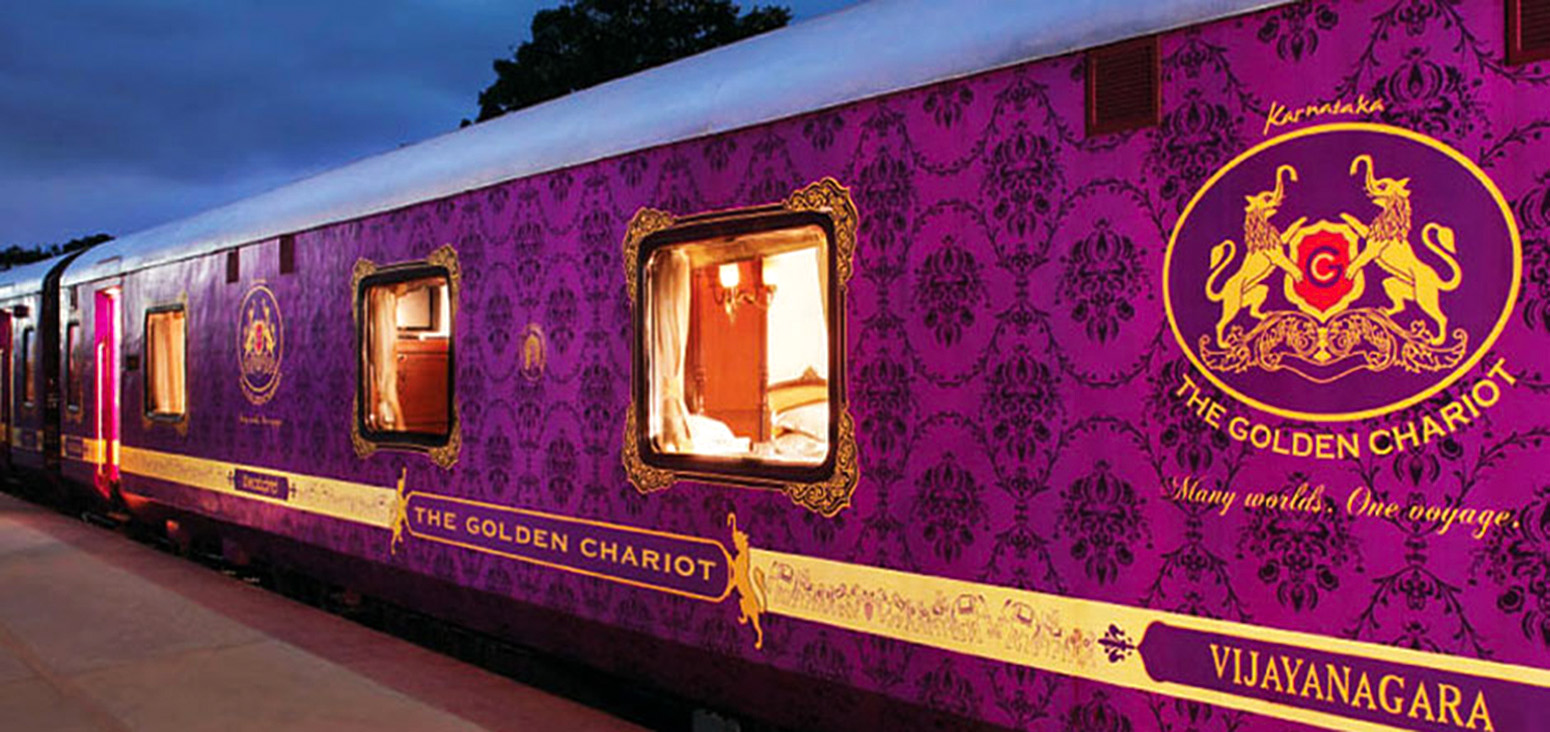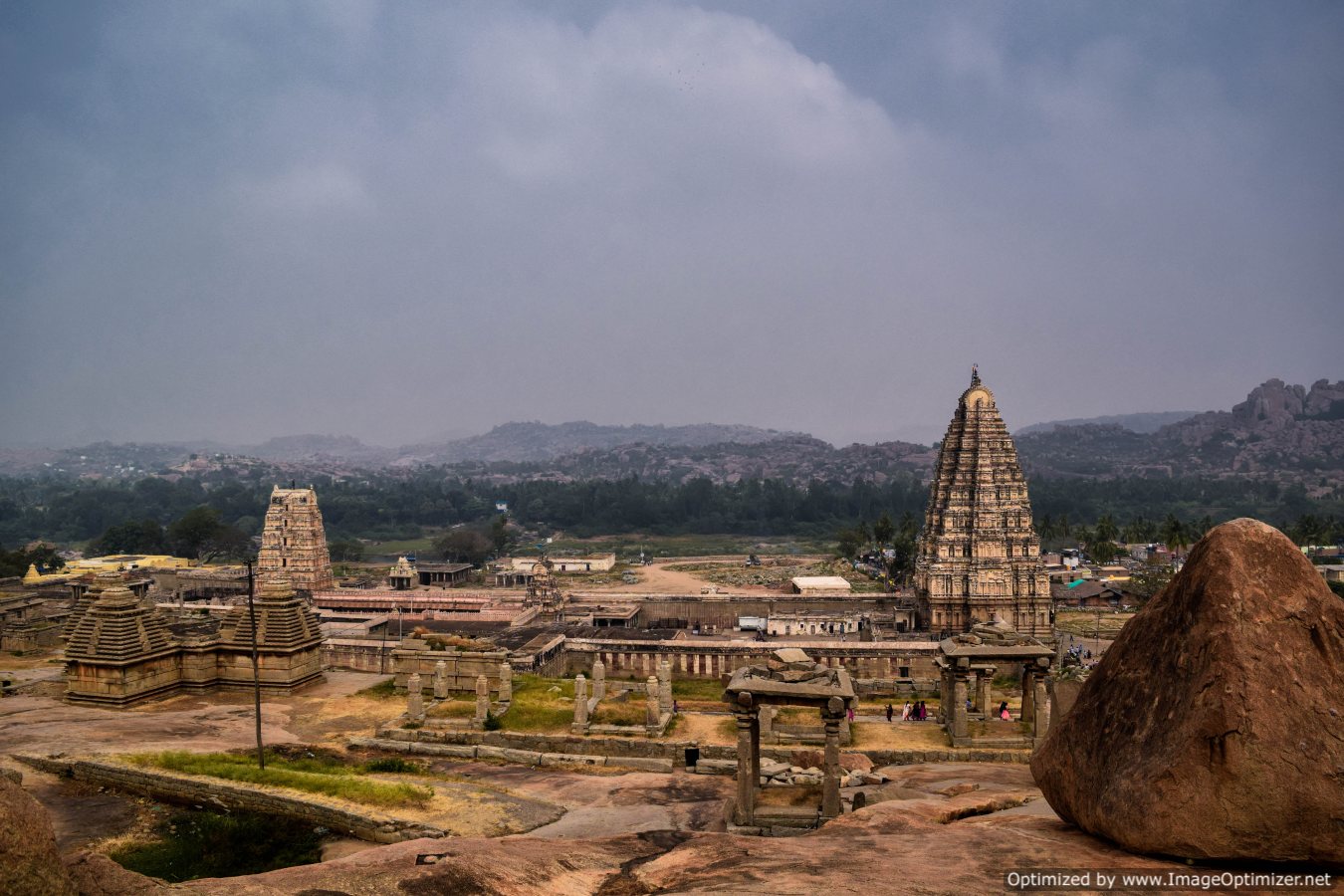A centuries old town at the mouth of a river, nestled between two rocky hills giving you the impression of a wildwest, lakes on other three sides and reputed for its rock cut temples, Badami can take you back ages. I marvelled at the dramatic landscape of the region, as we made way through it. Red sandstone cliffs, with deep fissures, rugged mountainous profile, dusty roads and the mud walled houses splashed with ochre dust; all seeming like a leaf taken from Wadi Rum.
Badami had been the capital of the Chalukyan rulers, a dynasty that ruled over Deccan for almost 200 years between the sixth and the eighth centuries. Chalukyans were great patrons of art and architecture and during their rule architecture took a transition from rock art to free standing structural architecture.

Cave temples overlook the Adil Shahi Mosque: Religions had always coexisted
Deity secrets
The first look of the Badami caves reminded me of a miniature and a rustier version of Petra. The lowest cave is dedicated to Lord Shiva, evident from the eighteen armed figure of a dancing god Natraj, at the entry point. Not an inch of space has been left untouched in the cave, murals, artistic columns, bejewelled deities, bracketed figures, angels and mythological tales on the pillars and roof make it an architectural wonder. And wonder all of this is monolithic, hewn deeply in the cliff. Up the steps, overlooking the greenish water body, Agastya Lake, are cave temples, consecrated to Lord Vishnu, depicted in his myriad forms. A sculpture sees him seated on a cosmic serpent, while other in his man-lion incarnation and yet a third depicts him raising his leg, a depiction of his yet another incarnation. The supporting beams have beam chain inscriptions, adorned with floral designs and sculptures of angels in close embrace on angles. The last cave is devoted to Jain Tirthankaras, gracefully sculptured, a tall sculpture of Mahavira on the ends and tales and philosophies carved on the walls. One glimpse and these caves seem an eclectic mix of art and spirituality.

Shiva cave temple

Jain Temple
We made our move to our next stop, Pattadakal, where ancient temples built in divergent styles waited for us. This coming together of North and South Indian architectural styles is probably due to the geographical position of Badami in the centre of the Deccan plateau.
Road to Pattadakal
Everytime I have been to an ASI protected heritage site, I’ve wished ASI had done a better job with signage and storytelling. Badami comes as a surprise –proper signage and historical accounts, immaculate paperbacks on Badami (including ones of George Mitchell) at the counters and guides who can take you beyond the temple architecture to literature, philosophy and culture as it evolved in the Chalukyan dynasty over a millennium ago. Standing there, in an incredibly dense complex of ancient buildings, is very close to a feeling of walking through a frozen landscape of bizarre red mountains. An ancient complex, a group of eight temples, carrying a hint of Southern and Northern style of temple architecture, taking you back centuries into a world of mythology, rituals and philosophies some too incredible to even believe they ever existed.

Mosaic of ancient temples in Pattadakal (notice the distinct designs of the spires in the temples)
Standing on ceremony
As stories embrace you, you wink at the wit of builders and philosophers, smile at the brilliance of design of sculptures and dexterity palpable on every wall of these temples. Pattadakal stands out among its contemporaries and even from other historical structures, for its sheer sophistication.
On a bend of the River Malaprabha, some 22 kms from Badami, the village of Pattadakal served as a ceremonial site for the Chalukya rulers. The Chalukyan style is a unique synthesis of Nagara (northern) and Dravidian (southern) styles which was later adopted by the Hoysalas rulers, further down in south Karnataka. The hall interiors of the temples are divided into multiple aisles by rows of columns, will walls covered with carvings showing hindu mythological tales. The central aisle leads to a central chamber accommodating Lord Shiva lingam, with richly ornamented sculptures of guards on either sides of the chamber. Only Virupaksha temple is still used for worship. The profusion of carvings on the outer wall of Virupaksha is tantamount to a visual encyclopedia of Hindu mythology. All you need is someone to tell these stories.

Mallikarjun temple in Pattadakal

Sands of time
The demarcation between the Nagara style of architecture and Dravida style of architecture is very conspicuous in the shape of the spires or shikhara. In nagara style, the tower is shaped as a pyramid soaring upwards towards the heavens and in dravidan style the towers are stepped and richly carved. All eight temples show different styles of architectures; the use of many novel features like aisles, curvilinear spires, roofs with receding tiers, porch suggest that the temples were built as manuscripts to be replicated from. The imposing Virupaksha and Mallikarjuna temples, alike in design, built by twin sister queens of King Vikramaditya II to honour his return from a battle, are graceful examples of timeless architecture of that era. Both the temples sport an enormous gateway, numerous inscriptions on the walls, beaded columns, spell-binding frescos, ornate motifs, rings of elephants and horses at angles to mark the king’s victory, richly carved roofs with floral and animal designs and abundant murals from the epics. No doubt the architect was given the title ‘Tribhuvanacharya’ (the master of three worlds).

Interiors of Mallikarjun temple

Sculpture on the wall of Virupaksha temple
I took a step, looked around, once more eyeful of these stone temples, standing like red sandstone mountains, set against the backdrop of azure blue sky, river flowing on one side; everything frozen, centuries pass by as you ponder, amused by this sheer poetry in stone.
Fast facts
Badami is well connected with major cities like Hyderabad, Mumbai and Bangalore via railway network. To stay, there are budget lodges available in Badami city or consider Karnataka Tourism hotel Chalukya for a decent stay.
Pattadakal is approximately 25 kms from the main district, one can either take a local bus (usually crowded) or hire private taxi. Some shared autos also ply on the route but the frequency of these is a matter of concern. Badami caves are approximately 6 kms from the main city and shared autos and buses ply on the route.








awesome place to see..
Yes Arun, it is, ancient and quaint
Aakash this is wonderful post I sincerely thank for this.
I shall come once again and read it. I shall take a printout of this post it is worth mentioning.
THANKS
Shiva
Oh! that’s such welcoming words. I could spend only a day in Badami, have to explore more some day
[…] a UNESCO world heritage site, running for over 10 square miles and then to the rock temples of Badami, another world heritage […]